Moscow Russia Travel Guide A Vagabond Life
Visiting Moscow, Russia is like stepping into a living history book, where the past seamlessly intertwines with the present. Moscow, the capital and largest city of Russia, boasts a rich and storied history that spans over a millennium. Founded in the 12th century, it began as a small trading post on the banks of the Moskva River. Over time, it evolved into a powerful political, cultural, and economic center, eventually becoming the heart of the Russian Empire.
One of the city’s most iconic symbols, the Kremlin, stands as a testament to Moscow’s historical significance. This fortress complex, dating back to the 14th century, houses stunning cathedrals, government buildings, and the residence of the President of Russia. Nearby, the Red Square, known for its vibrant festivals and military parades, is flanked by landmarks like St. Basil’s Cathedral, a masterpiece of colorful onion domes. As you explore Moscow, you’ll encounter a blend of architectural styles, from the medieval treasures to the Soviet-era skyscrapers and modern, cosmopolitan structures. This city’s unique fusion of old-world charm and contemporary dynamism ensures an unforgettable travel experience.
Moscow Russia Table of Contents
Moscow Russia Map

Moscow Russia
Travel Tips Moscow Russia
Moscow has excellent public transport which includes buses, trams, trolley-cars and a vast and very elaborate metro.
The easiest and cheapest way to get around Moscow is by buying Troika card, a re-loadable smart card which can be used on the metro, trams, buses and trolley cars.
A Troika can be purchased and topped up at any metro station. The cost is RUB50 which is refundable if you return the card at the end of your stay.
Alternately you can purchase a red paper ticket with a number of pre-loaded trips from the ticket booth in the metro. These tickets work on the metro, buses and trolleys Fares depend on the number of trips purchased; an 11-trip card costs RUB320.

May to June are the most popular months to visit Moscow, the weather is mild and the days are long…as are the crowds
July and August see hotter and often humid weather but is still a popular time with visitors
September brings Autumn with the trees turning beautiful shades of red, yellow and orange. Moscow celebrates City Day.
If you are keen to see Moscow in her winter coat December see any cultural festivals and the December Night Festival is held.
March and April is when the snows start to melt and the streets are slushy and dirty.
Weather
| Climate | Jan | Feb | Mar | Apr | May | Jun | Jul | Aug | Sep | Oct | Nov | Dec |
|---|---|---|---|---|---|---|---|---|---|---|---|---|
| Daily highs (°C) | -4 | -3.7 | 2.6 | 11.3 | 18.6 | 22.0 | 24.3 | 21.9 | 15.7 | 8.7 | 0.9 | -3 |
| Nightly lows (°C) | -9.1 | -9.8 | -4.4 | 2.2 | 7.7 | 12.1 | 14.4 | 12.5 | 7.4 | 2.7 | -3.3 | -7.6 |
When packing for a trip to Moscow, Russia, it’s important to consider the diverse weather conditions and cultural expectations. Here’s a comprehensive packing list to ensure you’re well-prepared:
-
Clothing:
- Warm winter coat or a waterproof jacket (if visiting during the colder months)
- Layered clothing, including sweaters and thermal underwear for winter
- Comfortable walking shoes (waterproof for wet seasons)
- Scarf, gloves, and a hat for cold weather
- A variety of clothing for different occasions, from casual to formal
-
Electronics:
- Universal power adapter
- Voltage converter (if your devices aren’t compatible with Russian voltage)
- Smartphone with a translation app and maps for navigation
- Portable charger and travel adapter
-
Travel Documents:
- Passport and visa (if required)
- Travel insurance documents
- Photocopies of important documents and passport photos
-
Money and Cards:
- Russian rubles in small denominations for convenience
- Credit/debit cards (notify your bank about your travel plans)
- Money belt or a secure travel wallet
-
Health and Personal Care:
- Prescription medications and copies of prescriptions
- Basic first-aid kit
- Toiletries, including toothbrush, toothpaste, and any specific personal care items
- Travel-sized hand sanitizer
-
Miscellaneous:
- Travel guidebook and maps
- Travel pillow and eye mask for long flights
- Russian phrasebook or translation app
- Reusable water bottle
- Travel locks for securing luggage
-
Optional Items:
- Camera and extra memory cards
- Travel umbrella
- Entertainment (books, e-reader, or travel games)
- Travel adapter for electronics
Remember that Moscow experiences extreme cold in the winter and can be quite hot in the summer, so pack accordingly. Additionally, dress modestly when visiting religious sites and consider the local customs and dress codes. Lastly, be prepared for varying levels of English proficiency, especially outside of tourist areas, so having a translation app or a few basic Russian phrases can be helpful for communication.
Things To See & Do In Moscow Russia
Moscow Red Square
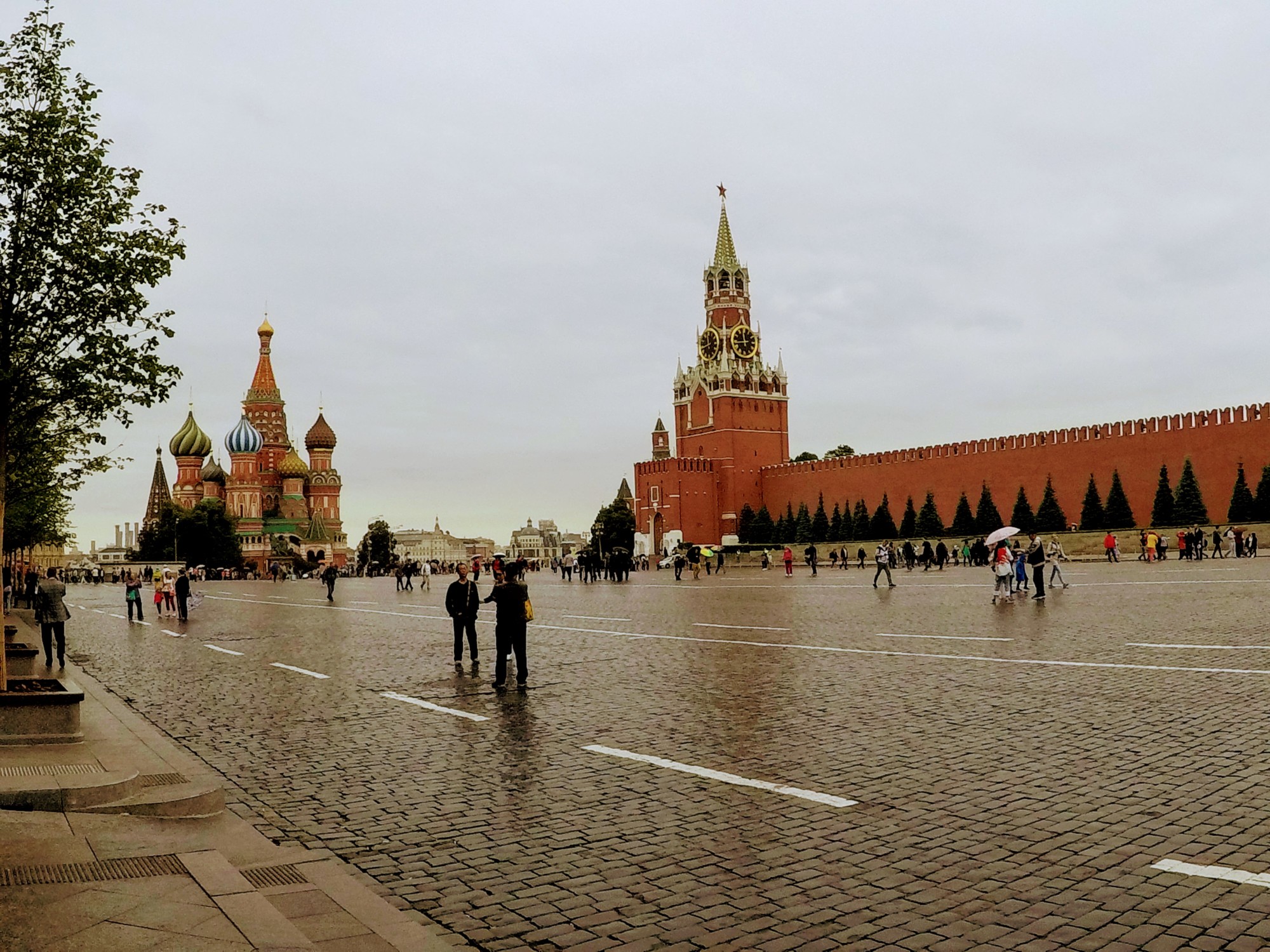
Moscow Red Square
Red Square, the heart and soul of Moscow, is a historic and iconic landmark that embodies the essence of Russia’s rich past and vibrant present. This expansive square, measuring 330 meters in length and 70 meters in width, has been at the center of Russian history for centuries. Its name, “Krasnaya Ploshchad” in Russian, doesn’t refer to the color red but rather to the word “krasnaya,” which originally meant “beautiful.” Red Square is surrounded by some of the most significant architectural and historical treasures in Russia, making it a must-visit destination for travelers.
The history of Red Square is steeped in events of national and international significance. It dates back to the late 15th century when Ivan the Great ordered the square’s reconstruction and established it as a marketplace and the city’s focal point. Over the years, it witnessed coronations, celebrations, and important military parades. One of the most recognizable landmarks on the square is St. Basil’s Cathedral, with its colorful onion domes, built in the 16th century. The square is also home to the historic State Historical Museum, the GUM department store, and the formidable red-brick walls of the Kremlin.
The closest metro stop to Red Square is “Okhotny Ryad” on the Moscow Metro’s Line 1 (the Red Line). It provides convenient access to this historic and vibrant location, making it easy for visitors to explore the heart of Moscow.
St Basils Cathedral
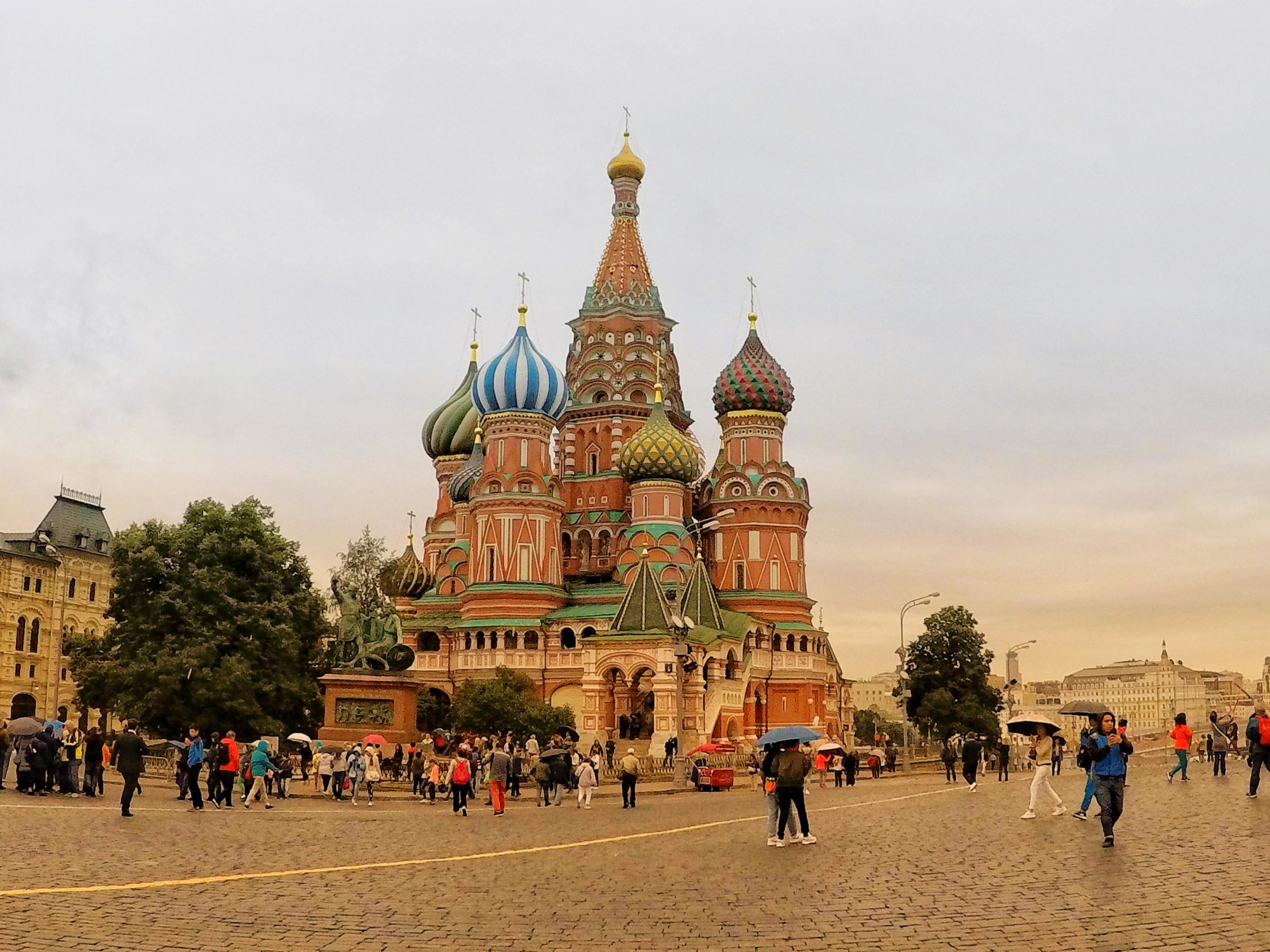
St Basils Cathedral
St. Basil’s Cathedral, also known as the Cathedral of Vasily the Blessed, is one of the most iconic and visually stunning landmarks in Moscow, Russia. This magnificent cathedral, with its whimsical and colorful onion domes, is a masterpiece of Russian architecture and a symbol of the country itself. It stands proudly at the southern end of Red Square and has a history as fascinating as its exterior.
Built between 1555 and 1561 by order of Ivan the Terrible, St. Basil’s Cathedral was constructed to commemorate the capture of the Kazan Khanate and Astrakhan Khanate. The cathedral is renowned for its unique design, featuring nine separate chapels, each crowned with a distinct and intricately designed dome. The interior is equally impressive, adorned with vibrant frescoes and an intricate maze of narrow corridors and interconnected chapels. Visitors can explore the history and religious significance of St. Basil’s while marveling at its dazzling architecture.
The closest metro stop is “Kitay-Gorod” on the Moscow Metro’s Line 6 (the Orange Line). From there, it’s just a short walk to this iconic landmark, making it easily accessible for tourists eager to experience the cultural and historical significance of this magnificent cathedral.
Address: Red Square, Moscow Russia.
State History Museum
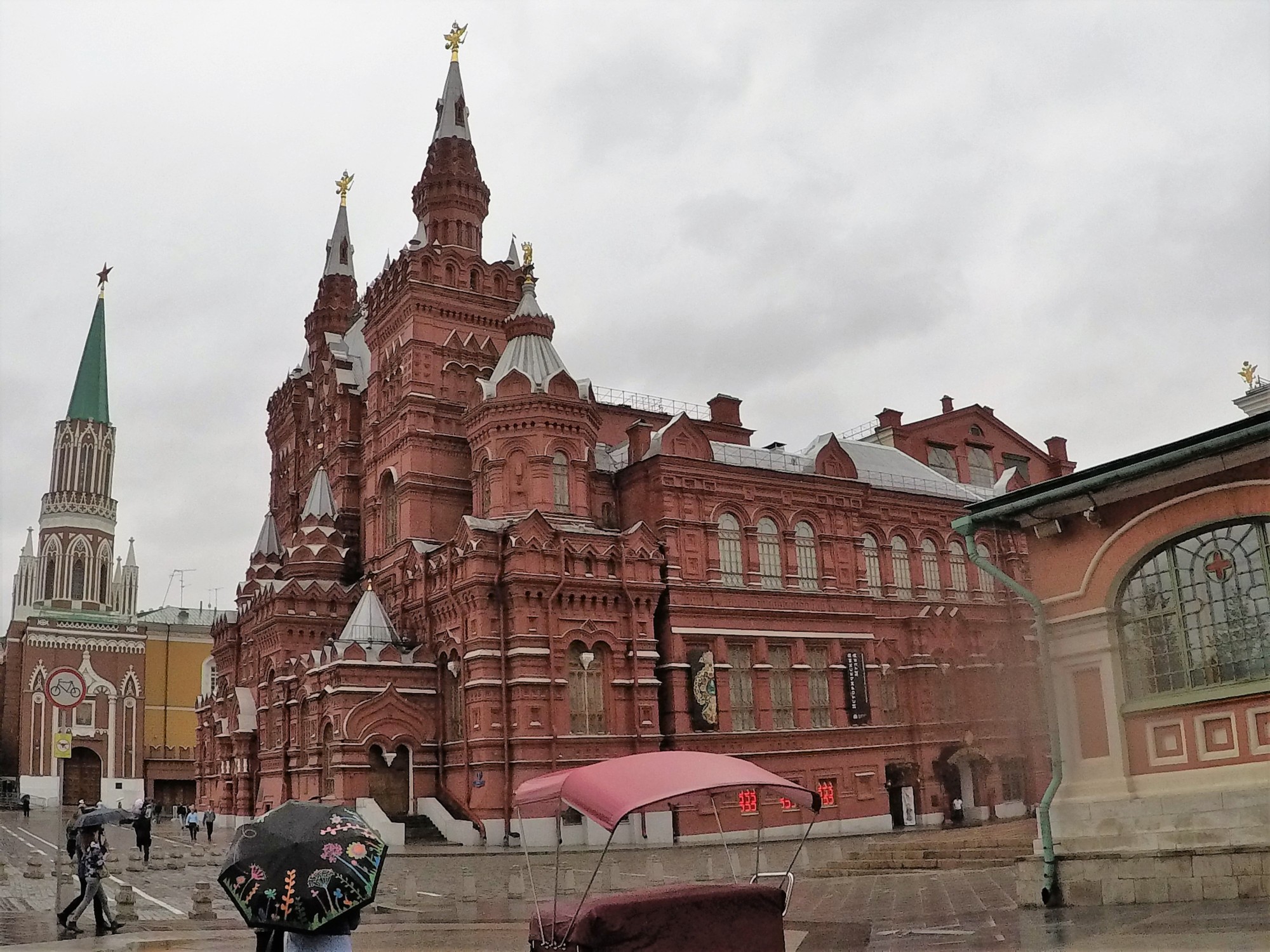
State History Museum
The State Historical Museum (Gosudarstvenny Istoricheskiy Muzey) in Moscow is a treasure trove of Russia’s rich and diverse history. Located at the northern end of Red Square, this majestic building is an architectural masterpiece in its own right. Its construction began in 1875 and was completed in 1883, with the purpose of housing a comprehensive collection that would chronicle the history and culture of Russia from ancient times to the present day.
Inside the State Historical Museum, visitors can embark on a captivating journey through time. The museum’s vast collection includes artifacts, artworks, and exhibits that span from prehistoric Russia to the modern era. You’ll find archaeological finds, religious relics, royal regalia, and even a collection of exquisite Fabergé eggs. Each exhibit tells a story of Russia’s complex past, from the reign of the tsars to the Soviet era and beyond.
The museum’s address is 1 Red Square, Moscow, Russia, 109012, and the closest metro stop is “Okhotny Ryad” on the Moscow Metro’s Line 1 (the Red Line). Its central location makes it easily accessible for anyone interested in delving into the fascinating history of Russia.
Opening Hours: Daily 10AM – 7PM
Lenins Mausoleum

Lenins Mausoleum
Lenin’s Mausoleum, located in the heart of Moscow’s Red Square, is a historically significant site that serves as the final resting place of Vladimir Lenin, the leader of the Bolshevik Revolution and the founder of the Soviet Union. The mausoleum, a striking red granite structure, has been a site of pilgrimage and reverence for generations of Russians and visitors from around the world.
The history of Lenin’s Mausoleum dates back to 1924 when Lenin passed away. His body was embalmed and placed on permanent display for the public to pay their respects. The mausoleum’s simple and somber design reflects the principles of Soviet architecture, emphasizing the importance of the state over individual grandeur. Visitors can see Lenin’s preserved body, which lies in a glass sarcophagus, as they file past in a respectful and orderly manner.
The address of Lenin’s Mausoleum is Red Square, Moscow, Russia, 109012.
The closest metro stop is “Okhotny Ryad” on the Moscow Metro’s Line 1 (the Red Line), which makes it easily accessible to those interested in experiencing this historical and political landmark.
Free admission.Get there early as queues are usually huge.
Open 10AM-1PM Tu, W, Th, Sat Closed on Su, M, F.
Moscow Russia Kremlin

Moscow Russia Kremlin
The Kremlin, a term that translates to “fortress” or “citadel” in Russian, is not just a single building but a vast, walled complex that serves as the epicenter of political, historical, and cultural life in Russia. Nestled on the banks of the Moskva River in the heart of Moscow, the Moscow Kremlin is a symbol of Russia’s enduring power and legacy. Its history is intertwined with the story of Russia itself, spanning over seven centuries of rule, transformation, and adaptation. As you step through its imposing gates and walk within its walls, you embark on a journey through time, discovering the secrets and treasures of this enigmatic fortress that has borne witness to the nation’s most pivotal moments.
Buildings in the Kremlin
- Cathedral Square
- The Cathedral of the Annunciation was built in 1482, and was where the Tzars were christened and married.
- Assumption Cathedral built in 1475 is Russia’s main and most important Cathedral. It is here that the Tsars were once crowned and Church patriarch buried.
- Cathedral of the Archangel Michael built in 1505. The cathedral holds the tombs of Russia’s rulers from Ivan I (1328-41) to Tsar Ivan V (1682-96), Peter the Great’s predecessor.
- Church of the Deposition of the Robe, built in a more traditional style of the late 15th century.
- Terem Palace, with 11 clusters of Domes is the oldest structure in today’s Kremlin and was the home of Russia’s rulers until Peter the Great.
- Grand Kremlin Palace. Once the home of the Tsars and now home of the Russian president, it is very ornate and very beautiful.
- Ivan the Great Bell Tower. Once the tallest building in Russia the Ivan the Great Bell Tower has 21 bells and gold topped domes and displays some of the artillery from the Armoury,
- The Patriarch’s Palace and the Cathedral of the Twelve Apostles is now a museum showing Russian life and art from the 17th C.
- Tsars Cannon was designed in 1586 to protect the Saviours Gate and has never been fired and the Tsars Bell is the largest bell in the world and has her been rung.
- The Armoury – holds all sorts of treasures including Faberge eggs.
- Diamond Fund. Diamonds and State jewels. You pay extra to see this exhibit
Tours fill up quickly so book ahead.
Hours: 9.30AM – 6.00PM Friday – Wednesday. Closed Thursday.
GUM Department Store
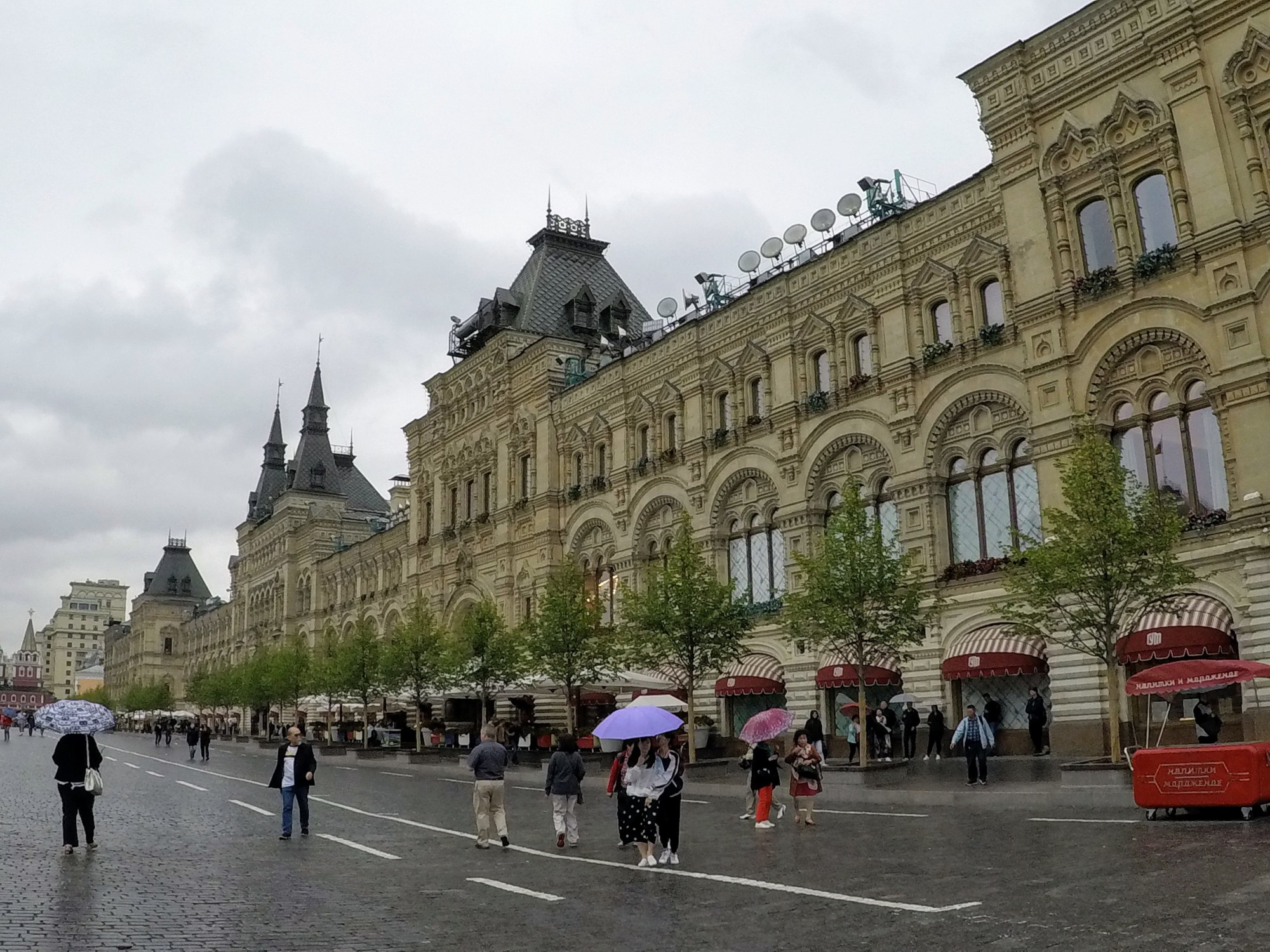
GUM Department Store
The GUM department store, standing proudly on the eastern side of Moscow’s Red Square, is a historic and iconic shopping destination that holds a unique place in Russian history. GUM, short for “Gosudarstvenny Universalny Magazin” in Russian, translates to “State Department Store.” Established in the late 19th century, it was originally built during the tsarist era and designed to showcase Russia’s imperial grandeur. Its stunning architecture, featuring a glass-roofed arcade with ornate facades, has made it an architectural masterpiece and a symbol of luxury and opulence.
During the Soviet era, GUM underwent a significant transformation. It was nationalized by the government and became a showcase for socialist consumer goods. While it retained its grand architecture, the focus shifted from high-end luxury items to everyday products that were available to the masses. GUM became an emblem of Soviet retail, offering clothing, food, and household goods to the citizens of Moscow. However, in the post-Soviet era, GUM was privatized, and it transformed once again into a high-end shopping destination. Today, GUM houses an array of luxury boutiques, designer stores, and international brands, while still preserving its historic charm. It’s a bustling hub where visitors can shop for high-end fashion, enjoy fine dining, and appreciate the architectural beauty of the past, all within the heart of Moscow.
Moscow Metro
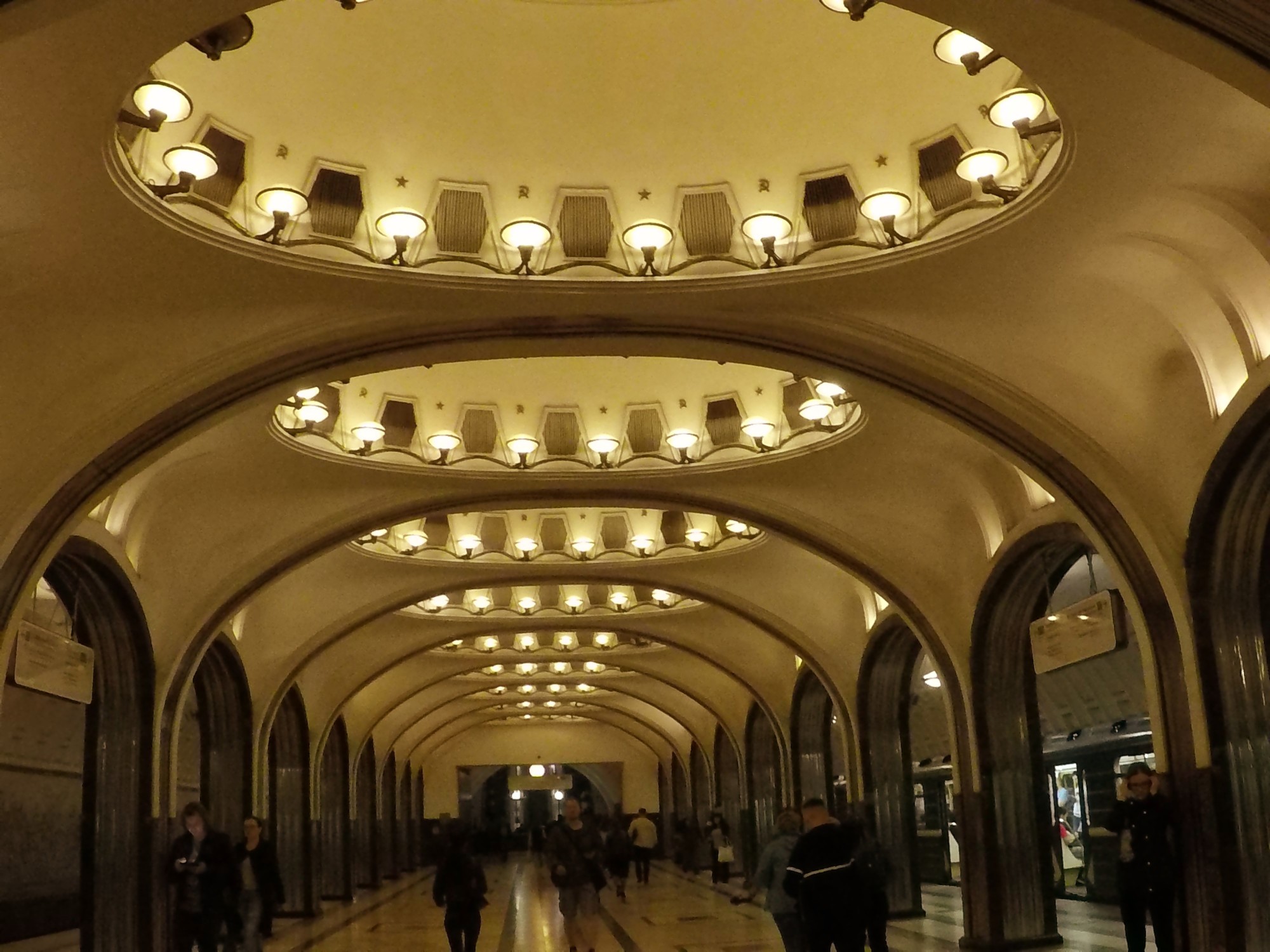
Moscow Metro
The Moscow Metro is not only a vital transportation system but also a remarkable underground art gallery that showcases the city’s architectural splendor. Known for its stunning metro stations, the Moscow Metro is a testament to the Soviet Union’s commitment to combining functionality with beauty. Five of the most beautiful and iconic metro stations in Moscow include:
Komsomolskaya: Often referred to as the “People’s Palace of the Moscow Metro,” Komsomolskaya station exudes grandeur with its Baroque-style architecture, ornate chandeliers, and intricate mosaics depicting scenes from Russian history.
Mayakovskaya: Designed in the Art Deco style, Mayakovskaya station features elegant columns, unique lighting fixtures, and a series of stunning mosaics on the ceiling that celebrate Soviet achievements in aviation, space exploration, and industry.
Novoslobodskaya: This station is famous for its stained glass windows, which create a mesmerizing kaleidoscope of colors. The stained glass panels were designed by the renowned artist Pavel Korin and add a touch of artistic brilliance to the underground world.
Kievskaya: Kievskaya station is a masterpiece of Stalinist architecture, featuring grand pillars, white marble, and majestic chandeliers. Its mosaics pay tribute to the friendship between the Russian and Ukrainian peoples.
Arbatskaya: Arbatskaya station, with its intricate plasterwork, elegant chandeliers, and beautiful relief panels depicting Russian scenes, feels like a subterranean palace.
These metro stations, among many others, not only facilitate the daily commute of millions of Muscovites but also serve as breathtaking cultural and historical landmarks that reflect the grandeur and artistic prowess of the Soviet era.
Moscow Gorky Park
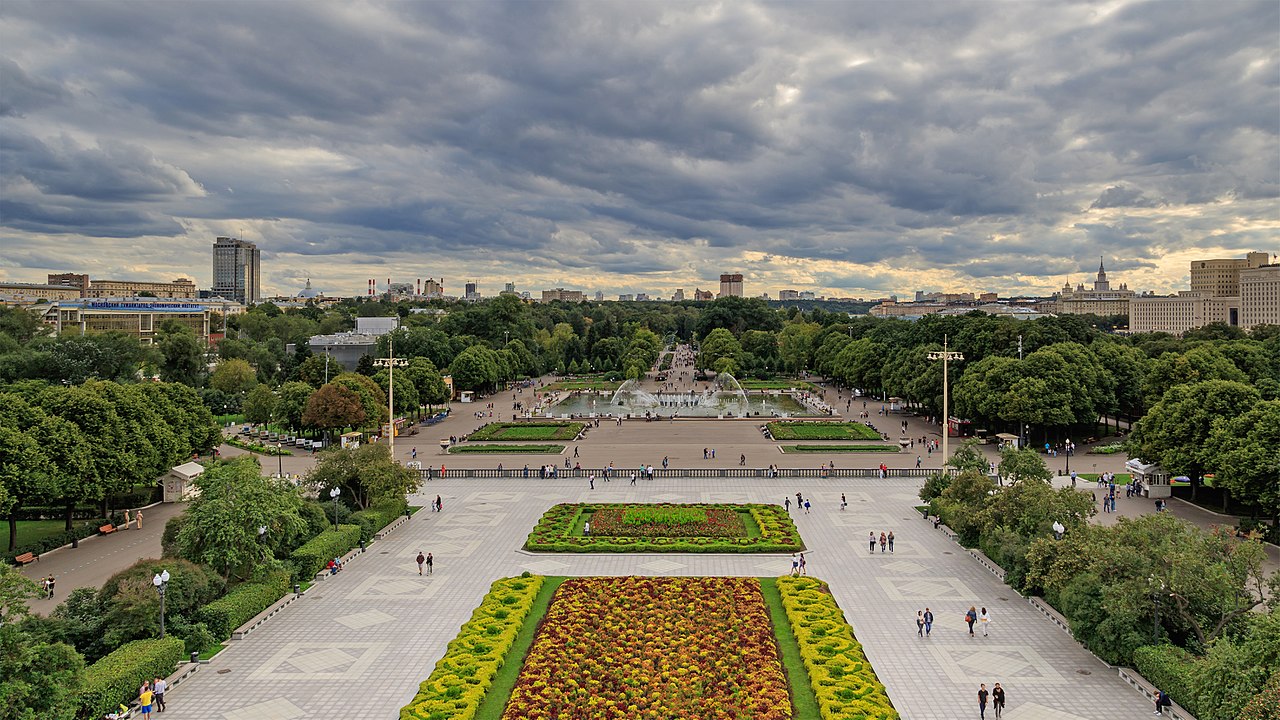
Moscow Gorky Park
Gorky Park, located along the banks of the Moskva River in Moscow, is a beloved urban oasis that has played a pivotal role in the city’s history and transformation. Established in 1928 and originally named after the Soviet writer Maxim Gorky, the park was designed as a recreational haven for the people of Moscow. During its early years, it featured amusement rides, sports facilities, and expansive green spaces where residents could relax and enjoy leisure activities. Gorky Park quickly became a symbol of Soviet urban planning and the pursuit of a healthier, more active lifestyle for the masses.
In Soviet times, Gorky Park was not just a place for relaxation and entertainment; it was a reflection of the ideological aspirations of the era. It was a hub for cultural events, showcasing various forms of art, music, and sports. However, in the post-Soviet period, Gorky Park underwent a significant transformation. Today, it has evolved into a modern urban park that blends the nostalgia of its Soviet heritage with contemporary amenities. Visitors can enjoy roller skating, cycling, open-air art exhibitions, and cultural festivals. Gorky Park has embraced its role as a cultural and recreational center, offering a diverse range of activities and experiences for both locals and tourists, making it a vibrant symbol of Moscow’s dynamic spirit.
Address: Krymsky Val, 9, Moscow,
Metro: Park Kultury Metro
Open: 24 Hours
Admission: Free
Russia Travel Guides
Russia Travel Stories
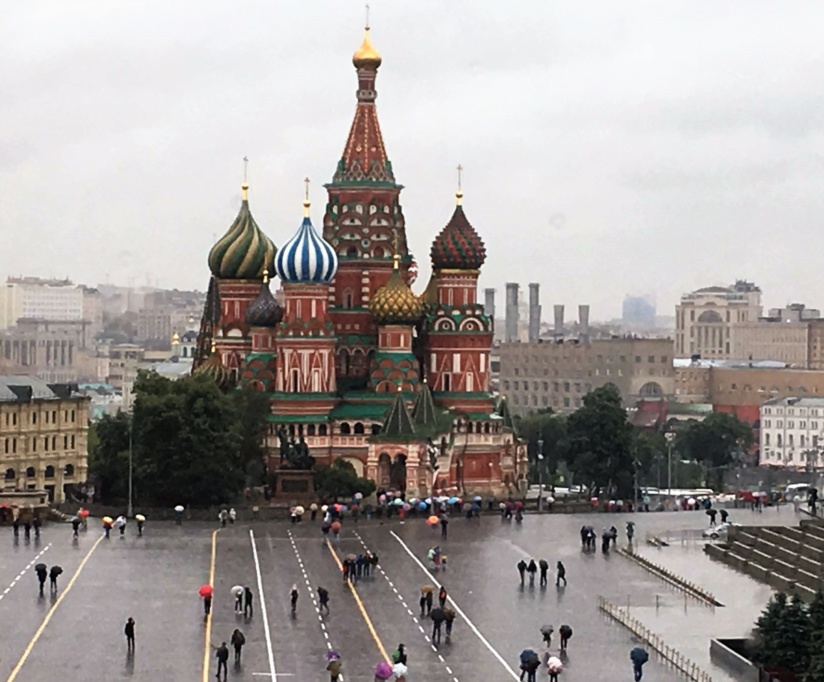
Visiting Moscow Russia
Visiting Moscow Visiting Moscow The weirdest apartment we’ve ever stayed in and non stop rain. We caught the night train from St Petersburg to Moscow,
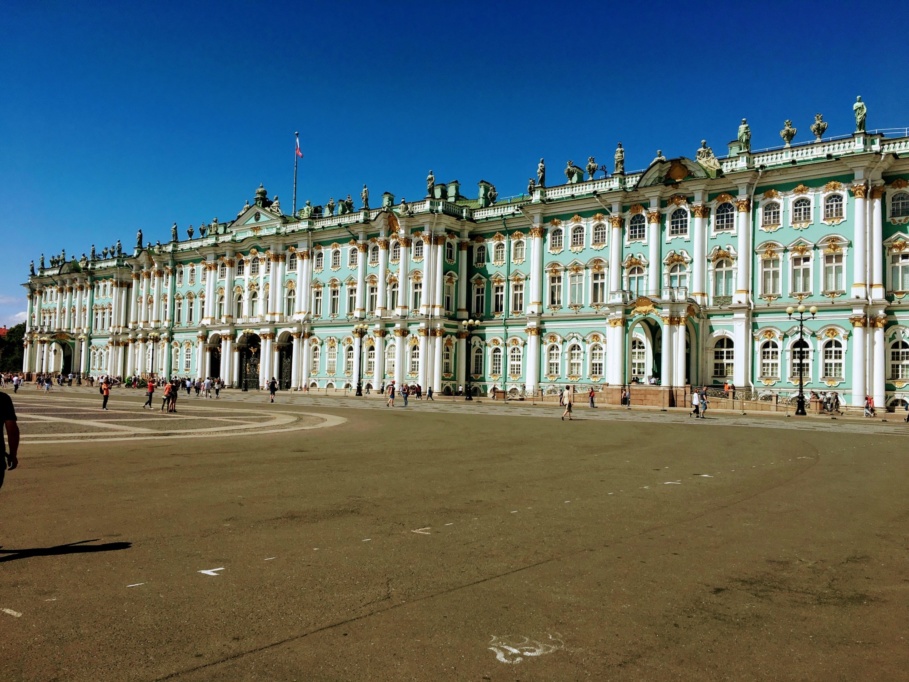
St Petersburg | 6 Days In St Petersburg
St Petersburg Russia St Petersburg Russia St Petersburg is one of the most sophisticated and beautiful cities on the planet. I don’t have a ‘bucket
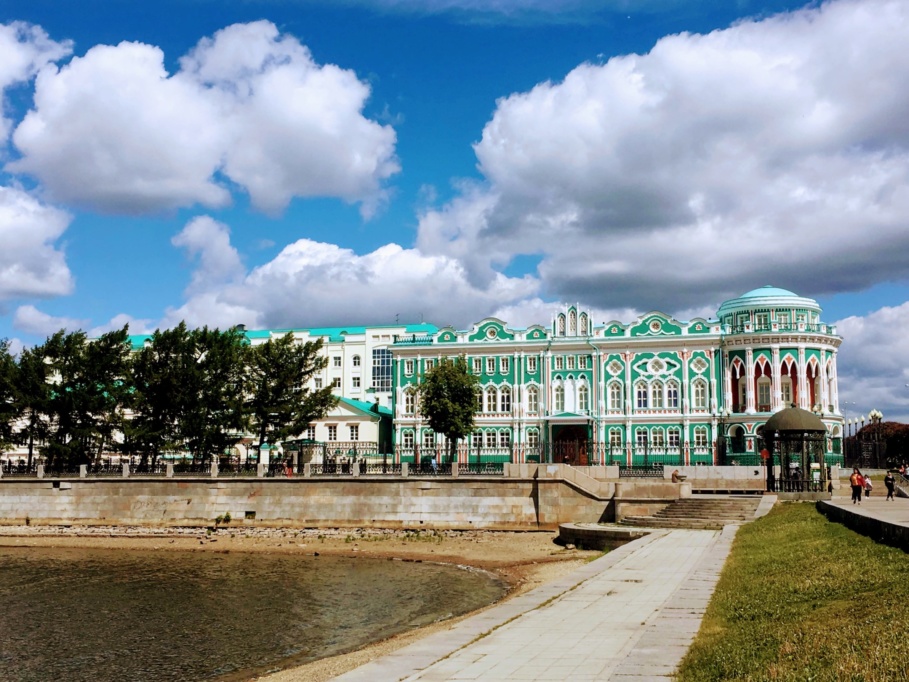
Across Russia On A Train
Across Russia On A Train Across Russia On A Train In June 2019 we crossed two thirds of Russia travelling just over 6000 kilometres ,
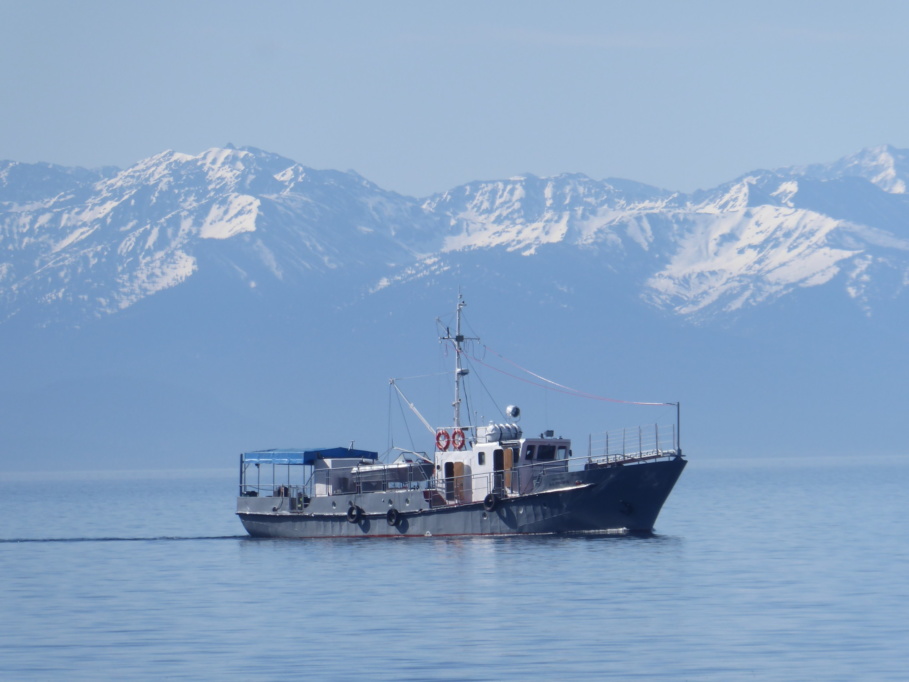
Beautiful Lake Baikal Russia
Visiting Beautiful Lake Baikal Russia Visiting Beautiful Lake Baikal Russia The Siberian Riviera? Stunning scenery, Delicious Fresh (and smoked) Fish, Cute Fresh Water Seals And
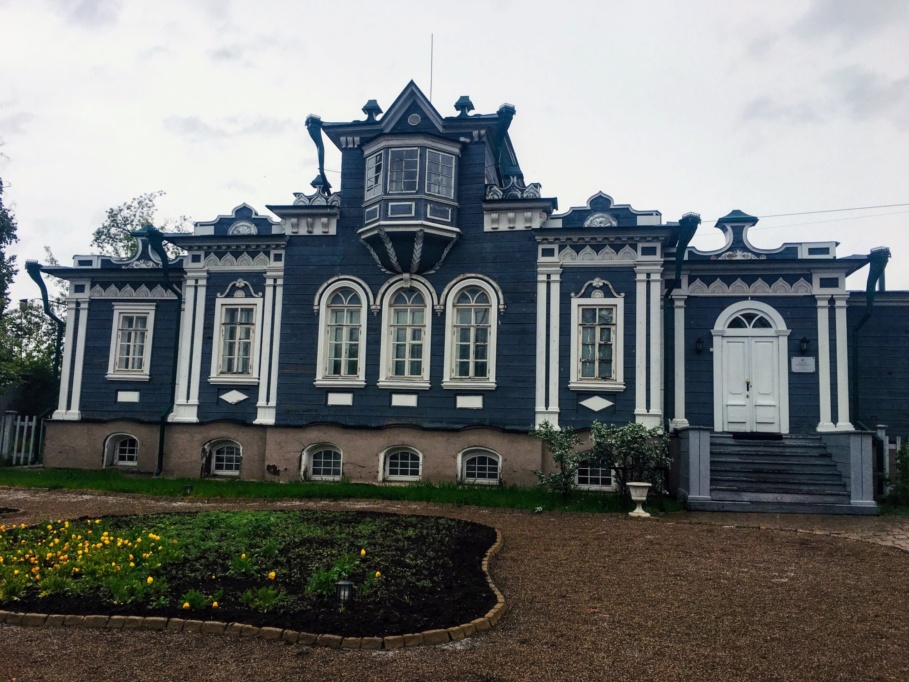
48 Hours In Irkutsk Russia
24 Hours In Irkutsk Russia 24 Hours In Irkutsk Russia Irkutsk Eastern Siberia Russia We were all hot and bothered by the time we reached
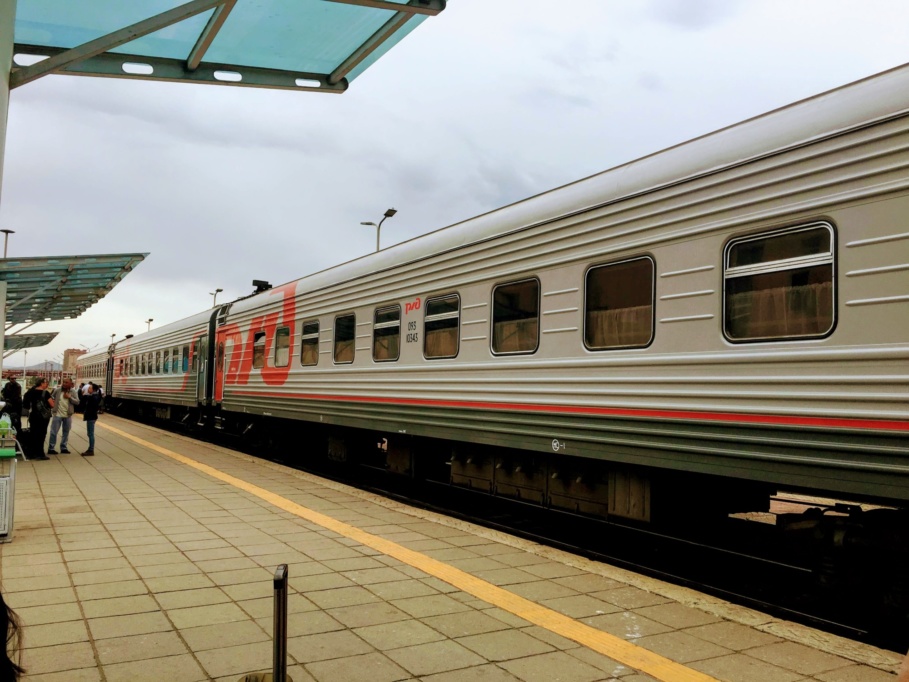
Irkutsk | A Night Train To Irkutsk Russia
A Night Train To Russia A Night Train To Irkutsk Russia Ulaanbataar Mongolia to Irkutsk Russia On The Trans Siberian Railway (We got in Trouble